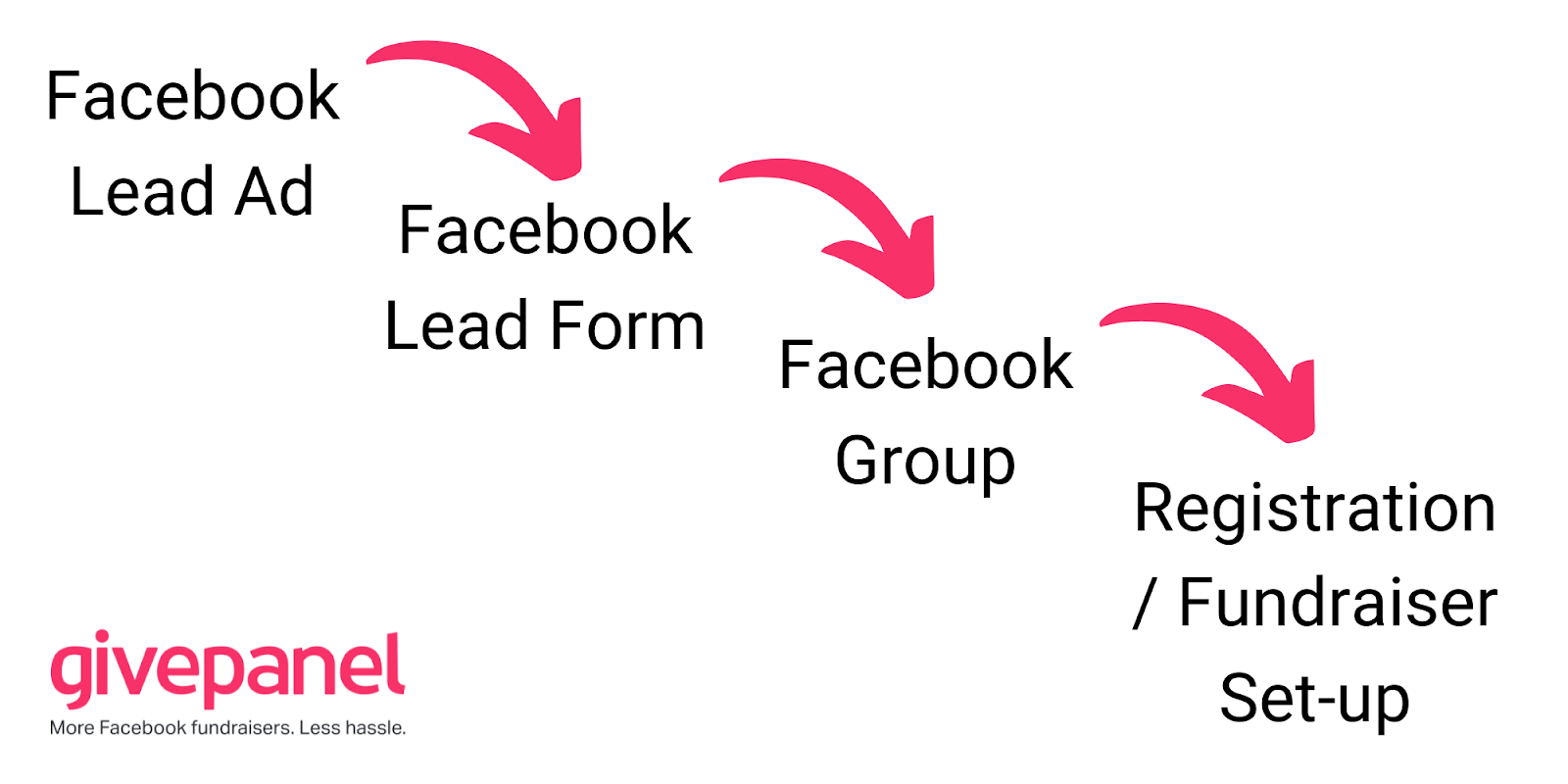Blog Is optimizing Facebook Ads for lowest cost per lead giving you the best Fundraisers?

Is optimizing Facebook Ads for lowest cost per lead giving you the best Fundraisers?
The standard acquisition strategy is for Facebook Lead Ads to recruit as many people as possible, as cheaply as possible. But are nonprofits sacrificing quality for quantity by focusing too much on the lowest cost per lead – and what’s the alternative?
Imagine you’ve set up your ads, recruited thousands of people into your Facebook Challenge, and now your nonprofit has a brand new, highly engaged Facebook Group of supporters…
You think you’ve hit the nail on the head, yet your fundraising total is much lower than you budgeted for and only a few participants are actively fundraising! You can still turn it around, but it could be that your Facebook Ads did not necessarily recruit the participants with the greatest fundraising potential.
It’s a problem that can be easily missed when cost per lead (CPL) is the only indicator used to monitor Facebook Ad performance.
Why have Facebook Challenge Ads historically focused on achieving low CPL?
The standard acquisition model for a Facebook Challenge is:

Like all ads, you must choose a point in this funnel to optimize the ads to. This is the point where you want Facebook to focus on and prioritize when delivering the ads.
The golden rule is that you optimize for the point closest to the goal you ultimately want to achieve. For Facebook Challenges, we ultimately want to recruit people who set up Facebook fundraisers and hit their fundraising target. Yet you are unable to optimize for the number or value of Fundraisers created (for now at least). This is too far down the funnel for the ads, which lose sight of your Challenge participants as soon as they enter the Facebook Group.
So instead, we optimize for the completion of the Lead Form and we tell Facebook to do this at the lowest cost possible. It should follow that the lower the cost per lead, the lower the cost per active fundraiser – and therefore that keeping your costs down means greater return on investment.
You can very cheaply recruit people to do a Challenge, that doesn’t mean they are going to fundraise for you. It is this fundraising intention which a focus on CPL can easily miss.
So, how else can you judge the success of your ads? CPL is important, but not the only indicator of success. Instead, we recommend you shift focus more to cost per active fundraiser (CPAF).
What is Cost per Active Fundraiser (CPAF) and what benchmark should I aim for?
Cost per Active Fundraiser (CPAF) tells you how much you are paying for people who set up a fundraiser with 1 or more donations. You calculate this by dividing ad spend by the number of active fundraisers.
Generally, if it is less than half your average income per fundraiser, then you are in the safe zone.
You know that the cost to recruit these active fundraisers will be easily covered by the amounts they raise. Ideally, by week 2 of your acquisition stage, the amount your fundraisers raise should cover the ad spend costs to recruit them.
Not everyone you recruit via your Lead Ads will set up a Facebook fundraiser straight away – or gain donations instantly. So, we also suggest keeping an eye on the percentage of leads to active fundraisers. By the end of your first week of ads, if 5% or less of your leads have active fundraisers – then you are probably attracting the wrong people to your Facebook Challenge.
How can you adapt your targeting to improve your CPAF?
We know that people under 30 are less likely to have a large network on Facebook, and similarly Instagram ads might reach people who don't even have Facebook. By excluding younger demographics and Instagram placements from your ads, you will focus your ad spend on where it may have the greatest return.
Audiences based on fitness and health interests will also bring in a lot of keen Challenge participants interested in achieving a personal fitness goal – but not necessarily fundraising. They can however be useful ambassadors for the Challenge as well as active group participants. By monitoring CPAF, you can quickly see if targeting them is perhaps increasing your CPAF above an acceptable level.
What about Facebook Ad content?
Your Facebook Ad content is key to attracting the right people. An ad which is very focused on the ‘free’ incentive might have an extremely low cost per lead, but it might also attract the dreaded ‘t-shirt bandits’ – people who mostly focus on receiving the free merch. Toning down the incentive by saying for example ‘Challenge T-shirt’ instead, might raise the CPL but also repel the bandits and decrease your CPAF.
You also want an ad that is Challenge-focused but features people that make it clear first-timer Challenge participants are welcome (not just fitness fanatics).
We also suggest having at least one variant with more of a focus on the charity cause. It might have a very high CPL, but as long as the CPAF and return on investment is positive, it is worth paying more to potentially attract people who are more connected to your cause.
So, to wrap up…
By focusing more on your Cost per Active Fundraiser (CPAF), you are able to see the broader picture and be alerted to any problems early enough to take action.
Don’t forget your Cost per Lead (CPL) completely – it still should be broadly in-line with our benchmarks – but a low CPL is only positive if it translates to a low CPAF.
Get more support from GivePanel
Join the GivePanel Academy
If you are a GivePanel customer, and are looking for more support with your Facebook fundraising and ads, why not join the GivePanel Academy (now launching in Australia later this year!)
Not yet on GivePanel?
Book a demo with a member of our team today!





